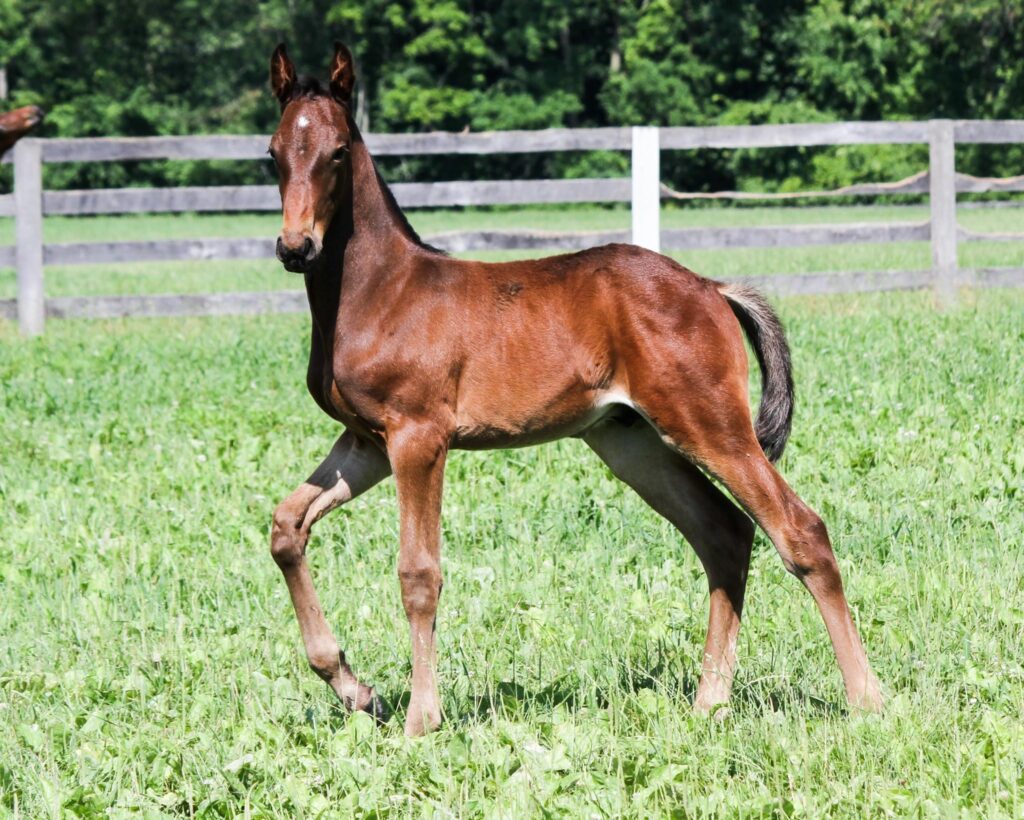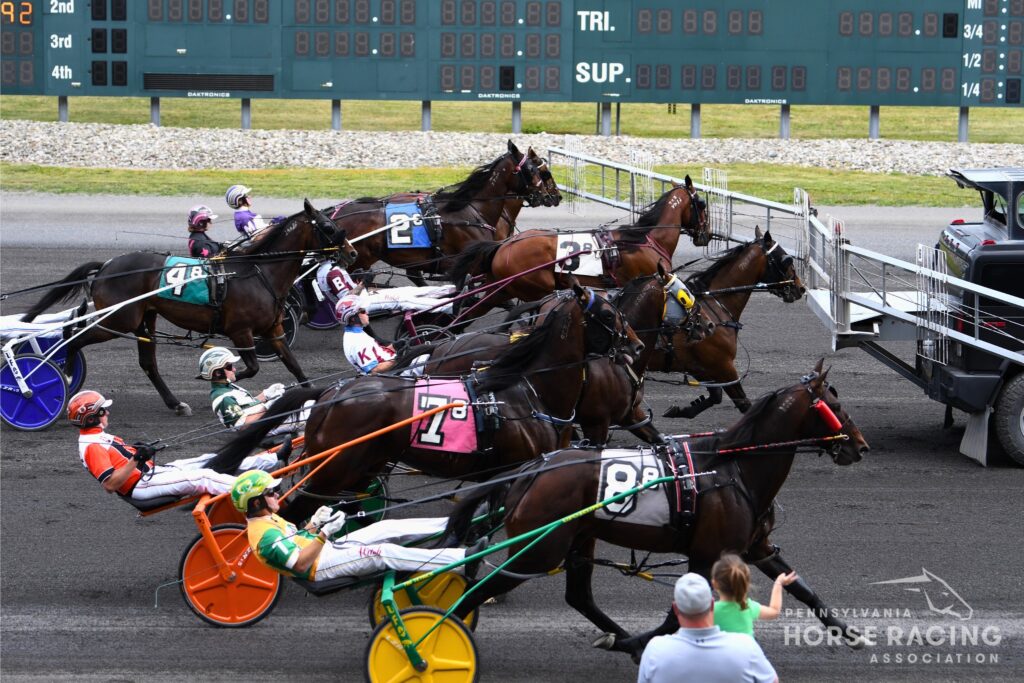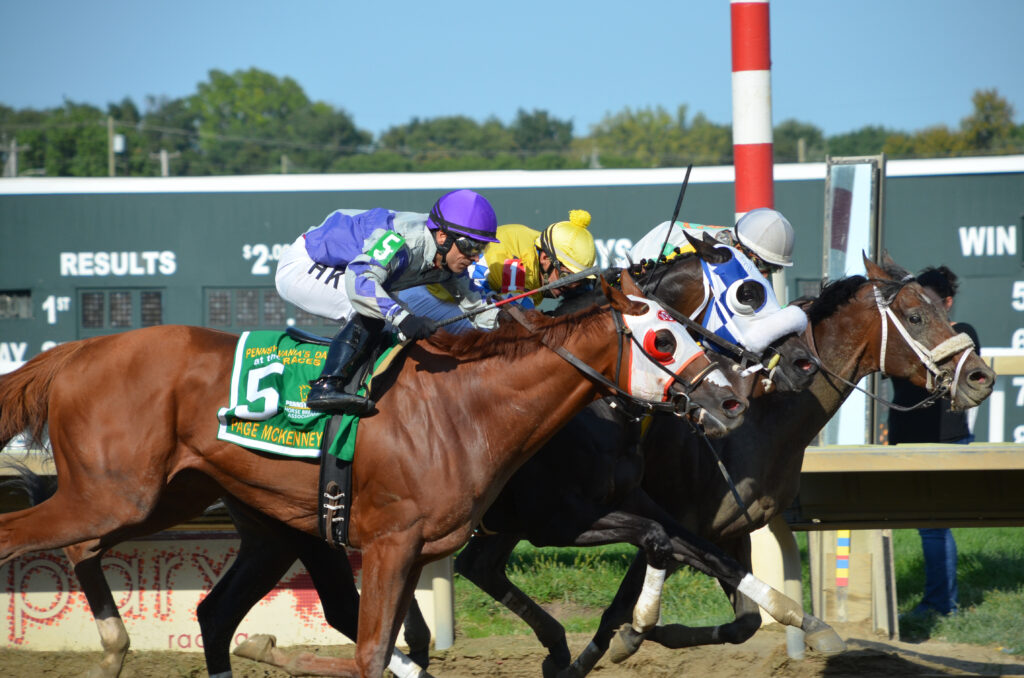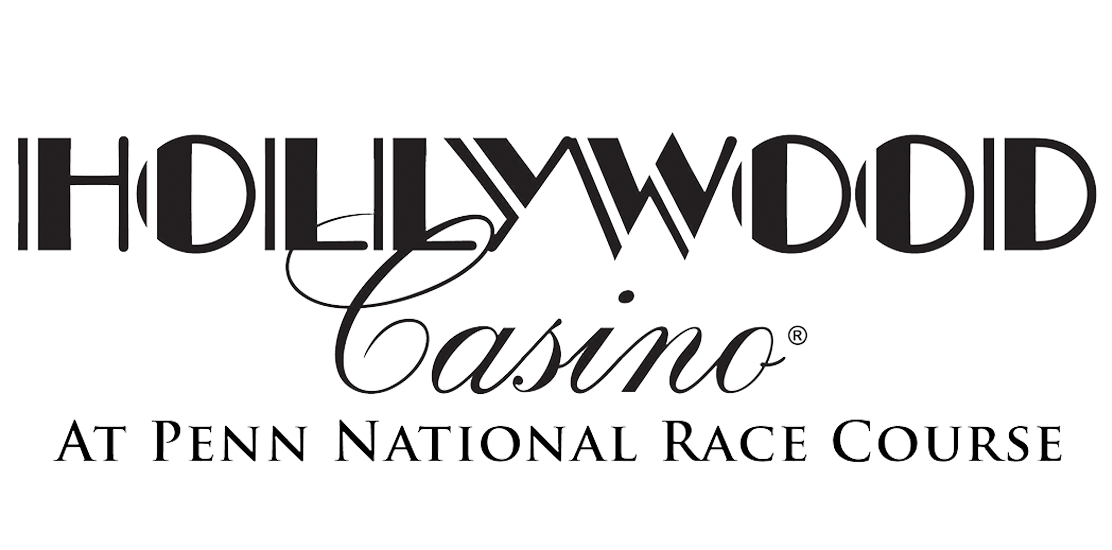Horse racing is a thrilling feat of athleticism, and a jaw-dropping, captivating event—but a race is nothing without the proper horses. If you’ve ever wondered why only certain horses race and others don’t, the answer is the breed.
For those new to the world of horse racing, it’s helpful to understand the two main horse racing breeds: Standardbreds and Thoroughbreds. While you’ve likely heard these terms thrown around the track, it may have left you wondering what they actually entail, from physical traits to racing style.
Let’s break down the differences between Standardbred and Thoroughbred horses.
What’s a Standardbred Horse?
Strong, sturdy, and dependable, Standardbred horses are considered “standard” for a reason. This North American breed is powerful and resilient, named for meeting a certain standard of trotting speed (one mile in under two minutes) [1].
A fun fact? Standardbred horses are actually descended from one horse, Hambletonian 10, an English Thoroughbred descendant. In the early 19th century, breeders chose to create a new generation of horses with Hambletonian’s powers—and the Standardbred horse was born. Since Standardbred horses descend from one horse and must meet trotting standards, they possess similar qualities: [1]
- Long and low bodies
- Powerful hindquarters
- Heavy bones
- Large hooves
- Thick hair
- Height of 15 to 16 hands (60 to 64 inches)
- Weight of 900 to 1,000 pounds

What’s a Thoroughbred Horse?
Sleek, slim, and agile, the Thoroughbred is a longtime beloved horse breed. In 17th-century England, Thoroughbreds were considered the forefathers of Standardbred horses and other modern breeds [2].
Similar to Standardbreds, all Thoroughbreds actually stem back to select individual horses. According to English royalty in the 16th and 17th centuries, true Thoroughbreds must originate either from the “Royal Mares” (43 horses selected by James I and Charles I) or from one of three imported Arab horses: [2]
- Byerly Turk (imported in 1689)
- Darley Arabian (imported after 1700)
- Godolphin Barb (imported circa 1730)

So, how did Thoroughbreds trot their way to the United States? A descendant of Darley Arabian was imported to the United States in the 1730s, thus beginning the country’s current Thoroughbred population (and eventually its Standardbred population). [2]
If Standardbreds are the burly wrestlers of horses, then Thoroughbreds are the agile swimmers. Through breeding, Thoroughbreds were selected to have these qualities:
- High and short bodies
- Sleek and lean builds
- Broad chests
- Small hooves
- Thin hair
- Height of 16 hands (64 inches)
- Weight of 1,000 pounds
On the Track: How Each Breed Races
Horse breeds are the product of centuries of careful selection. The result? Distinct lineages that showcase signature traits and strengths—especially on the racing track.
Both Thoroughbreds and Standardbreds were bred for specific racing powers. As Wager Warriors, it’s important to know what each breed brings to the starting line to make informed betting choices.
Standardbred Horse Racing
Standardbred horses are the “strong and steady” breed of racers. With their powerful builds and long lower bodies, Standardbred horses best suit the following categories of racing: [1]
- Harness racing – A Standardbred horse is built for harness racing. In this race, a horse pulls a two-wheeled cart (known as a sulky) with a driver guiding them from the cart [3]. The stamina and power needed for harness racing suit the Standardbred’s burly build. While drivers have no weight limit, they are often in athletic shape.
- Trotting – The origins of Standardbred horses are in trotting. With bodies low to the ground, this breed sets a steady, yet quick, pace in racing.
- Long races – If you’re embarking on a long race, then a Standardbred can trot you across the finish line. Most harness races are a mile long. A standarbred’s muscular, stockier build is made to endure these longer distances. In fact, their endurance often leads to longer racing careers, even into their teenage years.
- Pacing – When it comes to their gait, Standardbreds can either be pacers or trotters. In the US, pacers make up 80-90% of harness racing. As opposed to trotters, pacers move their legs laterally, that is, their left front and hind legs together and their right front and hind legs together. This makes them faster and able to accelerate more quickly, and they are less likely than trotters to break stride.

Thoroughbred Horse Racing
With elegant and lean builds, Thoroughbreds are the “quick and ready” breed of racers. Over centuries, their lighter gait excels in these racing categories: [2]
- Flat racing – Thoroughbreds are built for flat racing, carrying a lighter load across the finish line. In flat racing, a jockey rides the horse’s mount on a saddle and urges them to victory with subtle cues [3]. Jockeys are lighter and slimmer in nature, sticking to professional limitations on their weight.
- Galloping – Like lightning on the track, Thoroughbreds can explode into bursts of speed. With lighter bodies and longer legs, they succeed in sprint-like races that require intense galloping.
- Short races – For a short-distance race, call on Thoroughbreds. While they can’t sprint for miles, they can reach exhilarating speeds in short races that edge out other breeds. However, the intensity of flat racing for Thoroughbreds can be tiring, leaving them with shorter racing careers.

Discover Your Favorite Breed with the Pennsylvania Horse Racing Association (PHRA)
Every horse breed has its race—and every race has its wagers. If you’re interested in the world of horse racing, it’s important to know what each horse brings to the track. By understanding the differences between Thoroughbreds and Standardbreds, you can shape your bets for success.
Eager to place your first bet—but not sure where to start? We can offer a guiding hand.
Sign up with the Pennsylvania Horse Racing Association to become an honorary Wager Warrior, and you’ll receive free performance reports on current racing horses. Once you have your star trotters picked, you can plan your next bet at a track near you. Check out our events page and racing schedules for more information.
Hit the ground running and start your race for winnings today.
Sources:
- Britannica, The Editors of Encyclopaedia. “Standardbred”. Encyclopedia Britannica, 4 Dec. 2017. [Online], Available: https://www.britannica.com/animal/Standardbred. [Accessed July 14, 2023.]
- Britannica, The Editors of Encyclopaedia. “Thoroughbred”. Encyclopedia Britannica, 4 Dec. 2017. [Online], Available: https://www.britannica.com/animal/horse/Thoroughbred. [Accessed July 14, 2023.]
- Ontario Racing. “Race Day FAQs”. Ontario Racing. Available: https://ontarioracing.com/go-to-the-races/race-day-faqs. [Accessed July 14, 2023].











